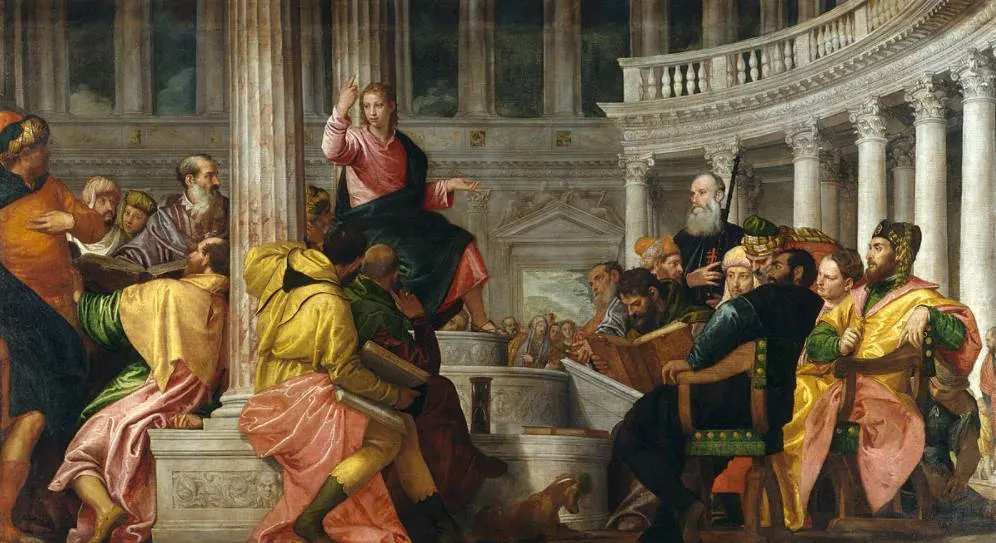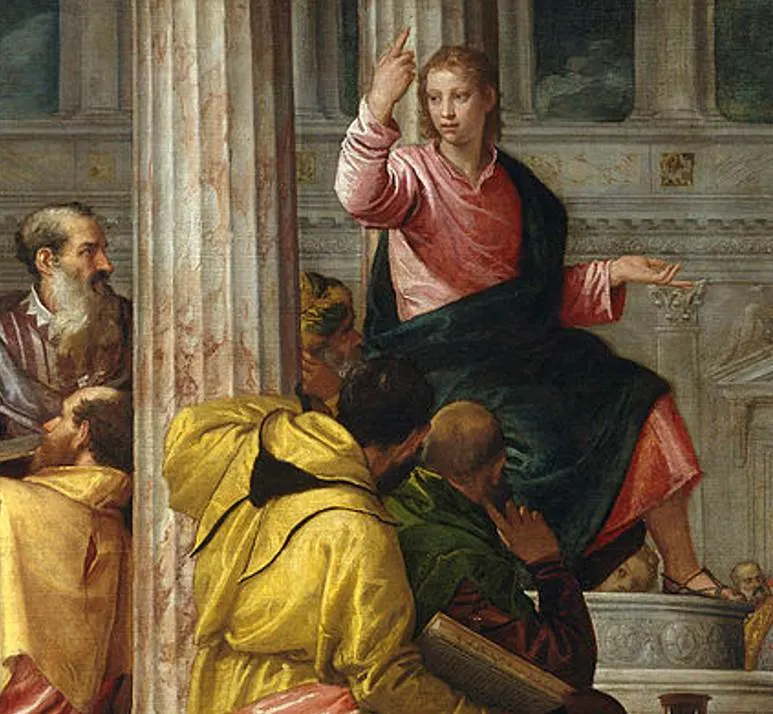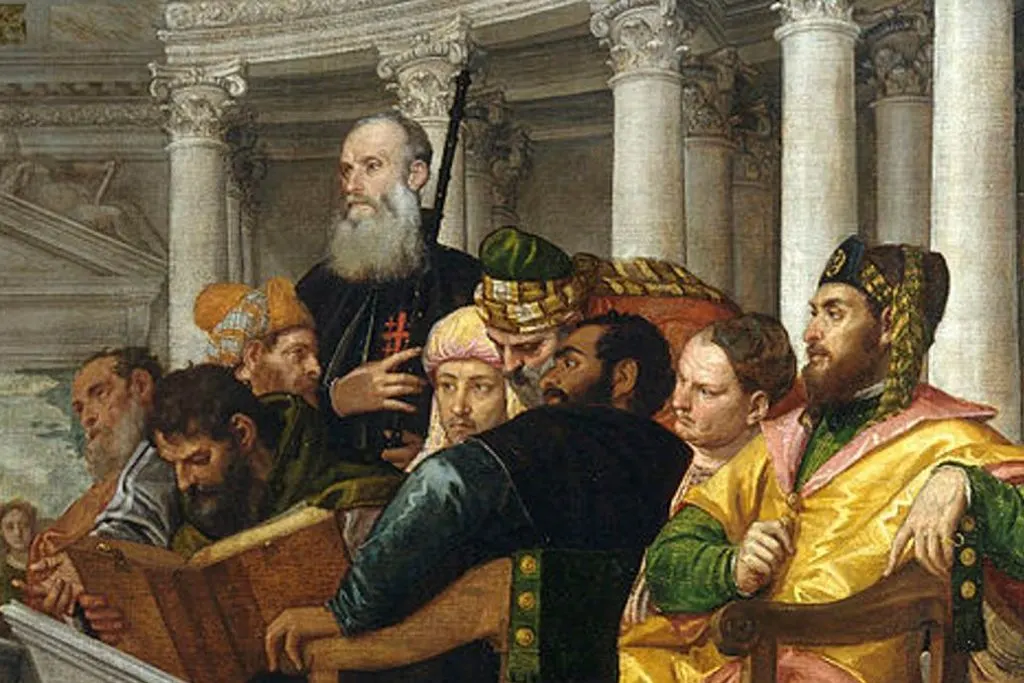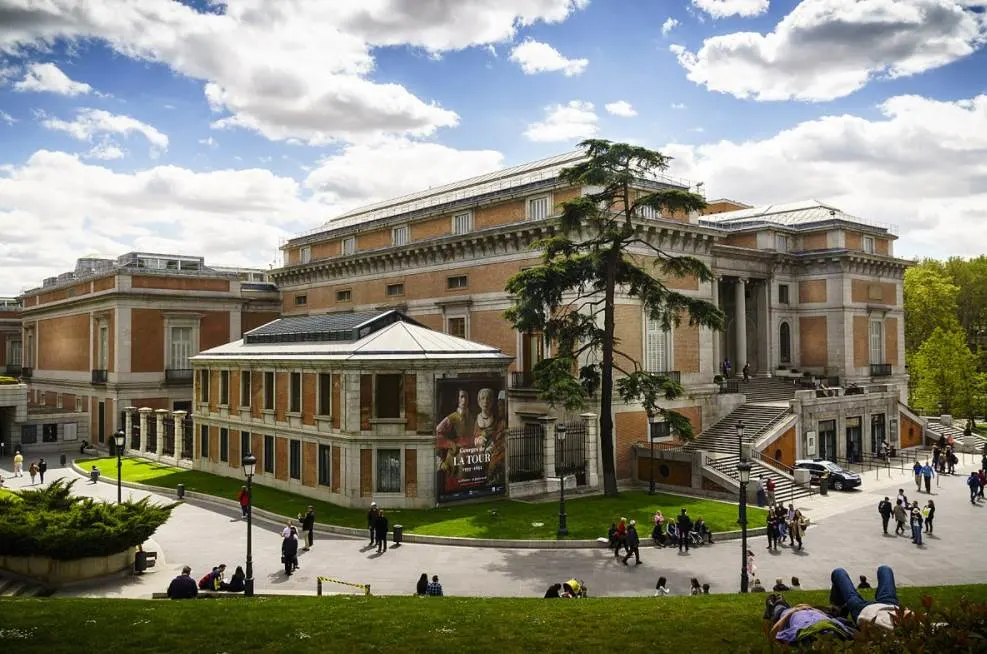The teenage years of Jesus Christ pretty much remain a mystery, except for one striking passage in one of the Gospels of the New Testament. It indicates the advanced way of thinking of the young man, something that wasn’t appreciated by the establishment.
Let’s take a closer look at some of the most interesting facts about Christ Among the Doctors by Paolo Veronese (1528-1588), a typical Veronese painting that emphasizes why the Mannerist artist was one of the leading painters of the 16th-century Venetian School.
1. The exact date it was painted remains up for debate
Christ Among the Doctors is one of the most famous paintings in the oeuvre of Paolo Veronese. It depicts a young Jesus Christ as he is debating with elderly people, some of whom are identified as doctors from which the painting derives its name.
Paolo Veronese, a famous Italian artist originally from Verona in Italy, arrived in Venice in 1553 and quickly established himself as one of the leading painters in the city. Together with Titian and Tintoretto, he is considered to be one of the 3 great masters of the Venetian School in the 16th century.
Little is known about the commission of this painting. A book held by one of the figures in the foreground mentions the number MCXLVIII or 1548.
Art historians deem this to be too early to represent the date that the painting was completed due to the advanced mastery of the work. That’s why it’s generally agreed that it was completed in the 1560s, a period in which the supreme colorist already developed his mature style.

2. It depicts a scene also referred to as “The Finding in the Temple”
The depicted scene takes place in the Temple of Jerusalem and is mentioned in chapter 2 of the Gospel of Luke. In the New Testament, it’s referred to as the “Finding in the Temple,” a reference to what happens in the story.
Jesus and his parents Mary and Joseph visit Jerusalem along with many family members for the occasion of Passover. This is a Jewish holiday that celebrates the exodus of the Israelites from slavery in Egypt.
When Mary and Joseph return home, they notice a day later that Jesus is not among them. When they return to Jerusalem, they find their son arguing with the elderly in the Temple, hence, the “Finding in the Temple.”
3. Jesus was still a young teenager according to the Gospel

The first thing you’ll notice is that Jesus Christ appears to be very young in the painting. That’s because according to the Gospel of Luke, he was only 12 years old when this event occurred.
It’s a remarkable story because it’s the only one in the gospels that refer to Jesus when he was in his late childhood. It’s an important event as well in Christianity as it’s classified as both the third of the Seven Sorrows of Mary and the fifth Joyful Mystery of the Rosary.
When Mary finally found her son arguing with the elderly in the temple he reportedly spoke the famous words: “How is it that you sought me? Did you not know that I must be in my Father’s house?”

4. The composition of the painting emphasizes Jesus’ superiority
The elderly are both surprised and shocked when they hear the teenager discuss advanced theological subjects with them. This sense of superiority was integrated by Veronese because he positioned Jesus above all the other figures.
The other distinctive characteristics in the painting are the architectural features such as columns, a portico, and even a balcony, all elements often found in paintings by the Venetian master.
5. The man who commissioned the work is included in the painting
Jesus sticks out of the bunch, but upon closer inspection, we can also see a bearded old man standing above the group of people on the righthand side of the painting.
We don’t know the identity of this man but art historians generally agree that the prominent position of this figure indicates that he is the man who commissioned the work.
Another element that strengthens this theory is the fact that he wears the clothes of a Knight of the Holy Sepulcher.
This in combination with the pilgrim´s staff that he is holding and the location inside the Temple of Jerusalem makes it fairly certain that it was commissioned to commemorate the man’s visit to the Holy Land.

6. It was bought by a renowned Spanish artist in the 17th century
There were two references made to this painting in the 17th century. The first time it surfaced after being completed in the 1560s was that it was located at the Casa Contarini in Padua. This was the residence of one of the most prominent Venetian families in a city about 40 kilometers (25 miles) west of Venice.
The next time the painting is mentioned was at an inventory of the Royal Alcázar Palace in Madrid in 1686. This means that it was brought to Spain in between this period.
The likely thing that happened was that it was acquired by Diego Velázquez (1599-1660), the renowned Spanish artist and court painter of King Phillip IV who visited Italy for the second time between 1649 and 1651.
7. How big is Christ Among the Doctors by Paolo Veronese?
Just like most paintings produced by Paolo Veronese, this work was painted at a monumental scale. It has dimensions of 236 × 430 centimeters (93 × 170 inches). This remarkable makes it far from being the largest painting by the artist.
The banquet scenes he became so famous for such as “The Wedding at Cana” (1562-1563) and the “Feast at the House of Levi” (1573) are much bigger with dimensions of 677 × 994 centimeters (267 × 391 inches) and 560 × 1,309 centimeters (220 × 515 inches) respectively.

8. Where is the painting located today?
The painting was moved to the Buen Retiro Palace, a massive palace complex that was located on the eastern edge of the city center of Madrid, in 1700. This palace was demolished following the Napoleonic Wars in the early 19th century and the site is now occupied by the wonderful Buen Retiro Park.
Following the destruction of the dilapidated palace, Christ Among the Doctors was briefly moved to the Royal Palace of Madrid where it hung between 1814 and 1818.
It was moved to its current location in 1819, the Museo del Prado, which is the national museum of Spain that houses an incredible collection of fine art.

